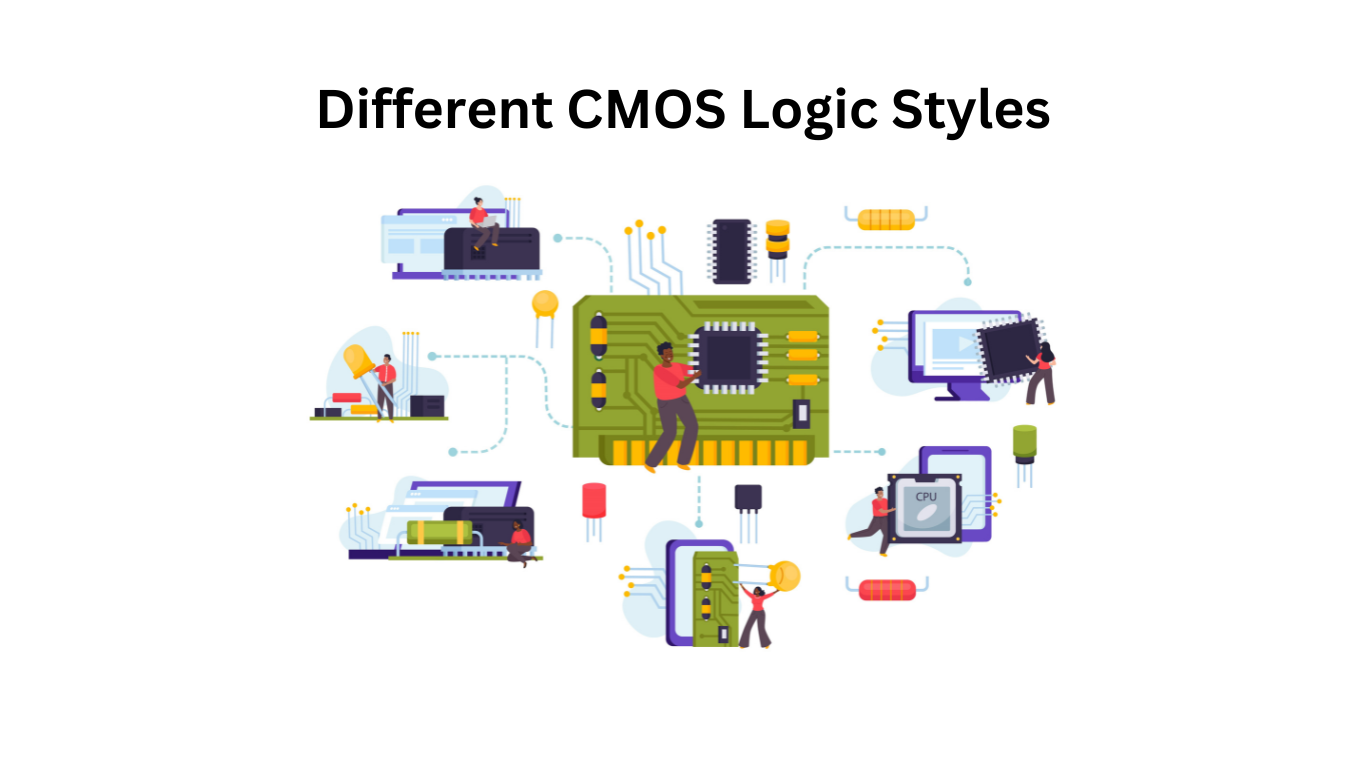Different CMOS Logic Styles
In CMOS, commonly use three styles: static, dynamic, and domino logic. In static CMOS, we combine both PMOS and NMOS transistors to create logic gates that are stable and reliable — perfect for most standard applications. There are various logic implementation techniques utilized in CMOS (Complementary Metal-Oxide-Semiconductor) technology for digital circuits. Each logic style has benefits and drawbacks, and the selection of logic style is influenced by the particular requirements of the circuit. Typical CMOS logic patterns include:

Static CMOS
The most used CMOS logic style is static CMOS. To implement various logic functions, it is made up of complementary pairs of NMOS (N-channel Metal-Oxide-Semiconductor) and PMOS (P-channel Metal-Oxide-Semiconductor) transistors coupled in series and parallel. When the circuit is in a stable state, it has low power consumption, but switching causes both NMOS and PMOS transistors to current simultaneously, which results in higher power dissipation.
Dynamic CMOS
Dynamic CMOS logic style uses the charging and discharging of capacitors to implement logic functions. It has lower power consumption during switching compared to static CMOS but requires a clock signal for proper operation. Dynamic CMOS can suffer from charge leakage issues and is more complex to design and implement.
Pseudo-NMOS
Pseudo-NMOS logic style uses only NMOS transistors to implement logic functions. It offers simplicity in design and reduced transistor count, but it has higher power consumption and is limited in terms of fan-out capabilities.
Domino CMOS
Domino CMOS is an enhancement of static CMOS that reduces power consumption during switching. It uses precharge and evaluation phases to achieve faster switching times. However, it requires a complementary clock signal and is sensitive to race conditions.
Transmission-Gate CMOS
Transmission-Gate CMOS logic style uses transmission gates (CMOS switches) to implement logic functions. It offers bidirectional signal flow and is suitable for multiplexers and analog switches. However, it has higher resistance, which can lead to signal degradation.
Pass-Transistor CMOS
Pass-Transistor CMOS logic style uses pass-transistors to pass the input signals to the output. It offers reduced transistor count and can achieve better packing density. However, it suffers from signal degradation due to resistance and capacitance in the pass-transistors.
Each CMOS logic style has its own trade-offs in terms of power consumption, speed, and complexity. Designers choose the appropriate logic style based on the specific requirements and constraints of the circuit they are designing.